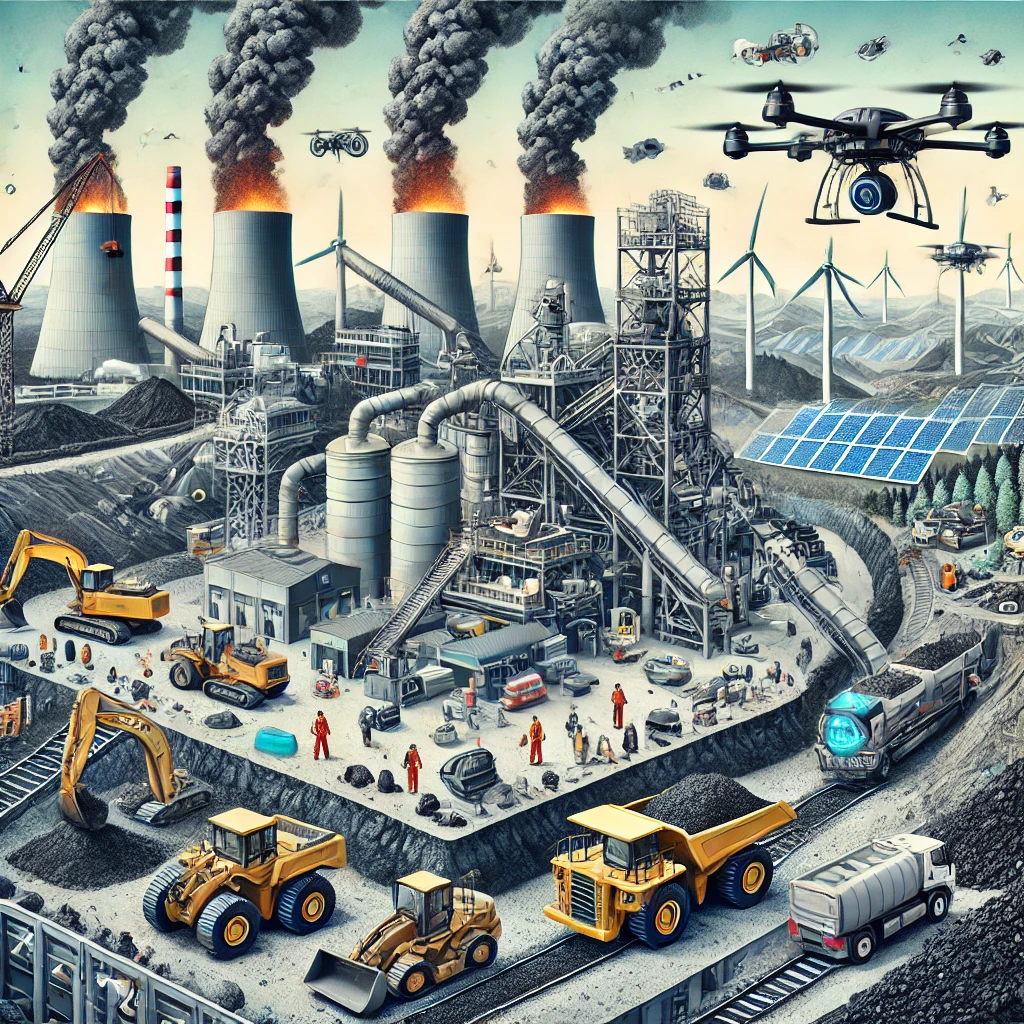In 2024, the coal mining industry finds itself at a critical juncture, balancing economic pressures, evolving technology, and intensifying environmental concerns. Despite being a key energy source for many nations, coal’s long-term viability is under increasing scrutiny as the world transitions toward cleaner, more sustainable energy solutions. Below is an in-depth look at the key trends shaping the coal mining sector this year.
Declining Demand and the Global Energy Transition
Global demand for coal is steadily decreasing, particularly in developed nations, as they shift toward greener energy sources like solar, wind, and natural gas. Stricter carbon emission targets from governments have pushed coal-dependent industries to seek cleaner alternatives. Yet, coal remains essential in countries such as China and India, where demand continues to be robust. Together, these two nations account for over half of the world’s coal consumption, driven by industrial needs and power generation. This persistent demand underscores coal’s ongoing relevance in regions where energy needs and economic realities still depend on the resource.
Economic Pressures and Geopolitical Influences
While the long-term demand for coal is shrinking, the industry has experienced mixed economic outcomes. In the short term, coal prices have risen in some regions due to supply disruptions caused by global geopolitical events, particularly the Russia-Ukraine conflict, which has unsettled global energy markets. Countries like Australia and Indonesia, leading coal exporters, have benefited from these price spikes, experiencing short-term economic gains. However, the industry’s long-term outlook remains uncertain as more nations commit to phasing out coal and embracing alternative energy sources.
Technological Advances and the Push for Automation
The coal mining industry is undergoing significant technological transformation as companies increasingly adopt automation and digitalization to boost efficiency, cut costs, and improve worker safety. Remote-controlled mining machinery, drones, and sophisticated monitoring systems are becoming common features, enhancing productivity while reducing the need for human involvement in hazardous mining environments. Though these technological advancements improve safety and operational efficiency, they also contribute to job losses in traditional mining communities, raising social and economic concerns.
Environmental Challenges and Regulatory Pressure
Environmental degradation remains one of the most pressing challenges facing the coal industry. Surface mining continues to cause deforestation, habitat destruction, and water pollution, while the combustion of coal is one of the largest contributors to global CO2 emissions. This makes coal mining a target for environmental organizations and regulators alike. In response, governments around the world are imposing stricter environmental regulations, with some countries, especially in Europe, actively working to phase out coal production. Nations like Germany and the UK are on track to eliminate coal from their energy mix by the end of the decade, setting a precedent for other regions.
Carbon Capture and Storage (CCS) as a Mitigation Strategy
To address coal’s environmental impact, carbon capture and storage (CCS) technologies are gaining attention. CCS aims to capture the carbon emissions produced during coal combustion and store them underground, reducing atmospheric pollution. Although promising, these technologies are expensive and not yet widely implemented. Some coal-dependent nations are exploring CCS as a potential solution to balance continued coal use with environmental commitments, but large-scale adoption remains years away, limiting its immediate impact.
Social and Economic Implications for Coal-Dependent Regions
The shift away from coal presents significant social and economic challenges for regions that depend heavily on coal mining for employment and economic stability. As coal production declines, many communities face job losses, economic downturns, and displacement. In response, governments are increasingly implementing “just transition” strategies—policies designed to support workers and communities affected by the decline of coal. These programs focus on retraining, social safety nets, and investment in alternative industries, aiming to mitigate the negative consequences of the energy transition.
Conclusion
In 2024, the coal mining industry stands at a crossroads. While it remains a vital energy source for developing economies, its future is clouded by growing environmental and economic concerns. The industry’s sustainability will depend on its ability to innovate, embrace cleaner technologies, and navigate the global shift toward renewable energy. Though coal’s role in the global energy mix will likely continue to shrink, it will remain relevant in specific regions, at least in the short to medium term. How the industry responds to these challenges will determine its place in the evolving energy landscape.











